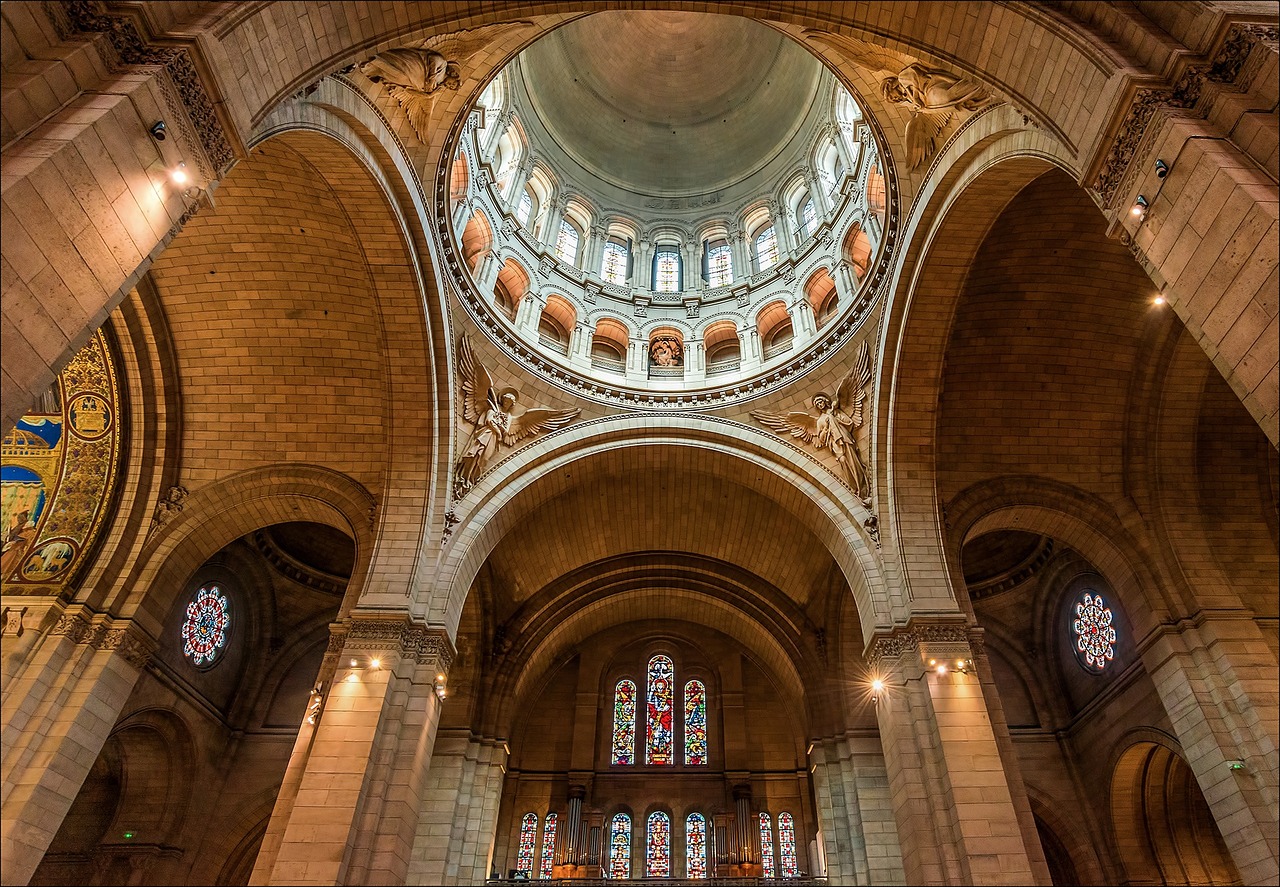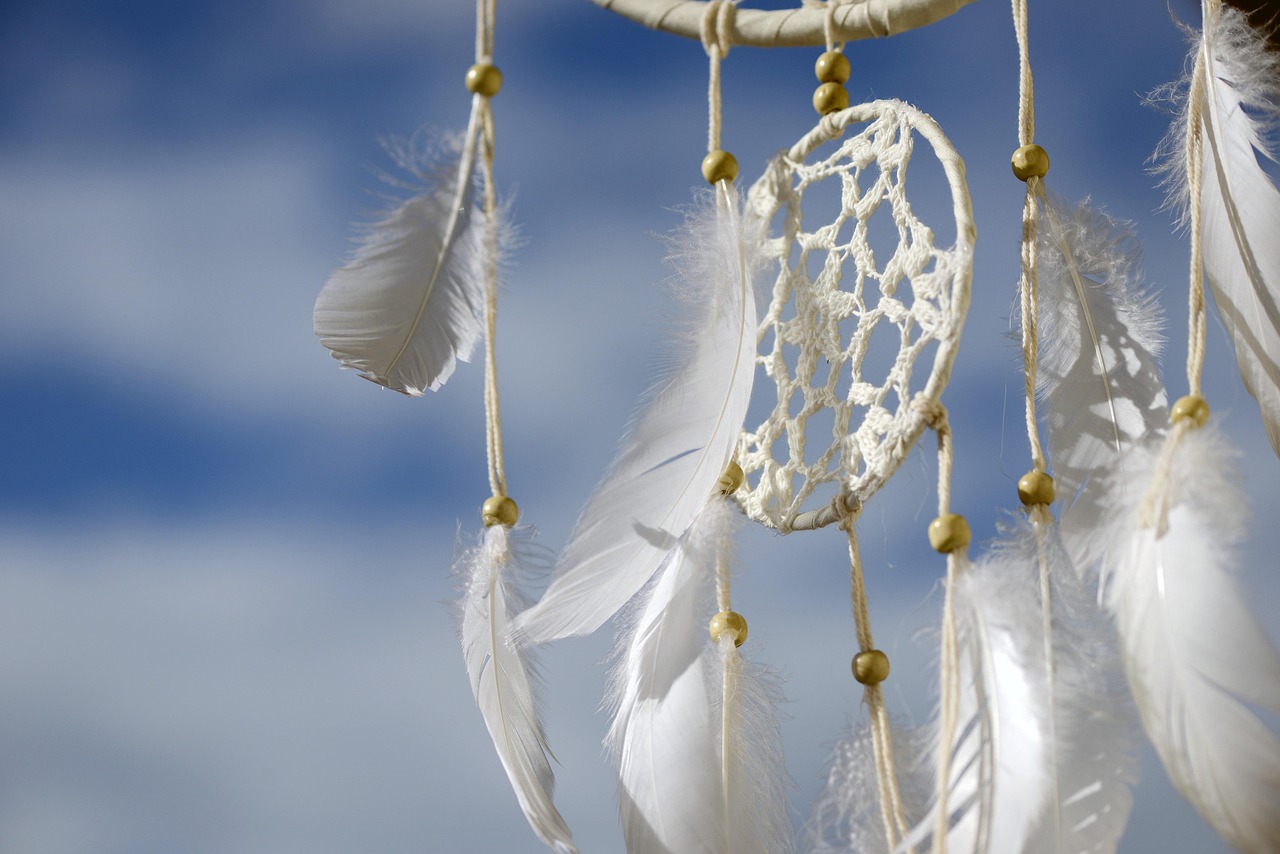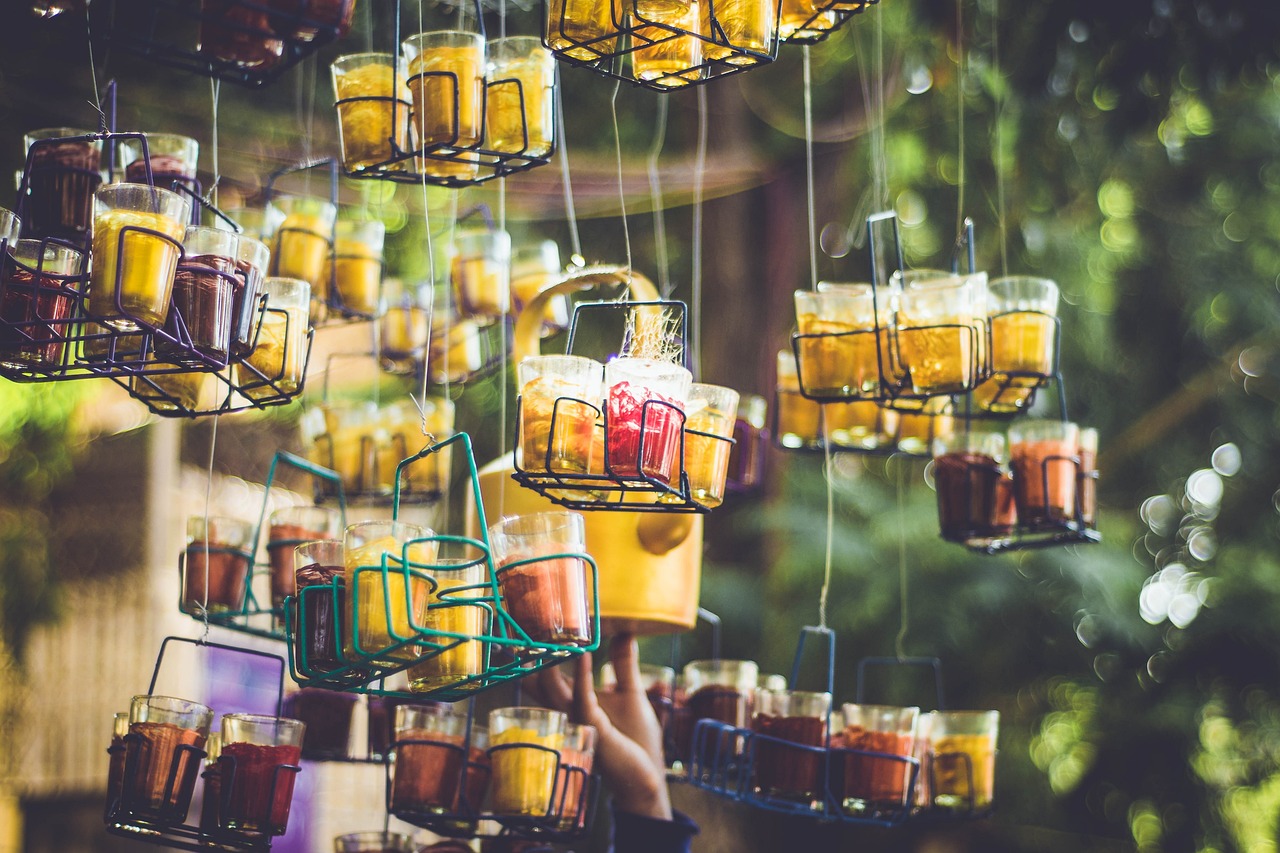The Relationship Between Art and Spirituality in Different Cultures
Art and spirituality have been deeply intertwined throughout history, serving as a powerful means of expression and connection to the divine in various cultures around the world. Different societies have utilized art as a reflection of their spiritual beliefs, using diverse forms and styles to visually represent their narratives and values. From ancient cave paintings to intricate religious sculptures, art has served as a mirror of the soul, reflecting the spiritual essence of humanity.
Across cultures, sacred symbols and iconography play a significant role in artistic expressions, conveying profound spiritual meanings and messages. These symbols not only enrich the visual language of art but also deepen the spiritual significance of artistic creations, creating a bridge between the material and the metaphysical. Whether it's the mandalas of Hinduism, the cross of Christianity, or the lotus flower of Buddhism, these symbols carry deep spiritual resonance.
Art is not just a visual representation of spiritual beliefs but also an integral part of various cultural rituals and ceremonies. Through ritualistic art practices, artists infuse spiritual meaning into their creations, transforming ordinary objects into sacred artifacts that hold symbolic power. From ceremonial masks to ritual paintings, art becomes a conduit for spiritual experiences, enriching the fabric of cultural traditions.
Many artists draw inspiration from spiritual sources and experiences, channeling divine inspiration into their creative process. The act of artistic creation becomes a spiritual practice in itself, a way to connect with the transcendent and express the ineffable. Whether inspired by nature, mythology, or personal spirituality, artists weave threads of the divine into their artworks, inviting viewers to glimpse the sacred.
Mysticism and artistic expression are deeply intertwined, with artists often delving into mystical experiences to fuel their creative vision. In diverse cultural traditions, mystics and artists alike seek to transcend the boundaries of the material world, tapping into the realm of the spiritual and the sublime. Through contemplative and introspective artworks, they invite viewers to ponder the mysteries of existence and explore the depths of the soul.
Artistic movements are often influenced by spiritual revivals and shifts in cultural beliefs, reflecting the evolving relationship between art and spirituality. From the Renaissance to the Romantic era, spiritual themes have inspired artistic innovations and aesthetic movements, shaping the trajectory of art history. As spiritual values change, so too does the artistic landscape, reflecting the dynamic interplay between creativity and belief.
Art has the power to heal, transform, and uplift the human spirit, offering solace and inspiration in times of need. Through artistic expressions, individuals across different cultures find a path to self-discovery, healing, and personal growth. Whether through painting, music, dance, or poetry, art serves as a beacon of light, guiding us on a journey of inner exploration and spiritual awakening.

Art as a Reflection of Spiritual Beliefs
Exploring how art serves as a medium for expressing spiritual beliefs and practices across various cultures, highlighting the interconnectedness of art and spirituality in shaping cultural identities and fostering a deeper understanding of the divine.
Art has long been recognized as a powerful tool for reflecting the spiritual beliefs of different cultures. Through intricate paintings, sculptures, and other artistic forms, individuals express their deep-rooted spiritual connections and beliefs. These artistic creations serve as visual representations of the intangible aspects of spirituality, offering a glimpse into the profound inner worlds of individuals and communities.
Across diverse cultures, art acts as a mirror that reflects the essence of spiritual practices and beliefs. From the vibrant colors of Indian mandalas symbolizing unity and harmony to the intricate geometric patterns in Islamic art representing the infinite nature of the divine, each artistic expression carries a unique narrative of spiritual significance.
Moreover, art not only mirrors existing spiritual beliefs but also has the power to shape and influence them. Artists often play a pivotal role in interpreting and reimagining spiritual narratives, breathing new life into ancient traditions and beliefs through their creative interpretations.
By delving into the world of art as a reflection of spiritual beliefs, we uncover a rich tapestry of cultural diversity and spiritual depth, where each brushstroke and sculpted form tells a story of faith, devotion, and transcendence.

Sacred Symbols and Iconography
Exploring how art serves as a medium for expressing spiritual beliefs and practices across various cultures, highlighting the interconnectedness of art and spirituality in shaping cultural identities and fostering a deeper understanding of the divine.
Examining how different cultures use art to visually represent their spiritual beliefs and narratives, showcasing the diverse forms and styles that emerge from these expressions.
The use of sacred symbols and iconography in art plays a significant role in conveying spiritual meanings and messages. Across various cultures, symbols like the lotus flower in Buddhism or the cross in Christianity are deeply rooted in spiritual significance. Iconography, such as the depiction of gods and goddesses in Hindu art or the mandala in Tibetan Buddhism, serves as visual representations of divine concepts and stories.
Art is intricately woven into various cultural rituals and ceremonies, enhancing the spiritual experience for participants. Whether through intricate murals adorning temple walls or dance performances during religious festivals, artistic expressions contribute to the creation of meaningful and transformative experiences that connect individuals to their spiritual beliefs.
Artists often draw inspiration from spiritual sources and experiences to create works that evoke a sense of the divine. Whether through religious scriptures, meditative practices, or visions during prayer, the transcendent nature of art reflects the spiritual essence that permeates different cultural contexts.
The realm of mysticism intertwines with artistic expression, as artists channel mystical experiences into their creative processes. Through abstract art that seeks to capture the ineffable or surrealism that delves into the subconscious, cultural traditions find avenues to express profound and contemplative aspects of spirituality.
Spiritual revivals and movements often leave a lasting impact on artistic practices and aesthetics. The evolution of art in response to shifts in spiritual beliefs can be seen in movements like the Renaissance in Europe, where a renewed interest in humanism and religious themes transformed artistic expression, reflecting the changing cultural values.
The therapeutic and transformative power of art in spiritual practices is profound. Through mandala coloring therapy in psychology or icon painting in Orthodox Christianity, art serves as a medium for healing, self-discovery, and personal growth, transcending cultural boundaries to touch the soul.

Ritualistic Art Practices
When delving into the realm of ritualistic art practices, we uncover a profound intertwining of artistic expression with spiritual rituals and ceremonies. Across diverse cultures, art plays a pivotal role in shaping and enriching these sacred practices, infusing them with symbolic meanings and transformative experiences. Artists, revered as conduits of divine inspiration, create artworks that not only reflect but also actively participate in the rituals of their culture.
Within ritualistic art practices, symbolism reigns supreme, with every stroke and every color carrying layers of significance. These symbols, often deeply rooted in spiritual traditions, serve as bridges between the earthly and the divine, guiding both the artist and the observer on a spiritual journey. Whether it's the intricate patterns of a mandala or the vibrant hues of a ceremonial garment, each element is carefully crafted to evoke a sense of reverence and connection to the sacred.
Moreover, the process of creating ritualistic art itself becomes a sacred act, a form of worship and devotion. Artists engage in meticulous preparations, often involving prayer, meditation, and purification rituals, before embarking on their creative endeavors. This ritualistic approach not only imbues the artwork with spiritual energy but also transforms the act of creation into a deeply spiritual experience for the artist.
Through ritualistic art practices, cultural traditions are not merely preserved but actively revitalized and reinvented. Each brushstroke, each chant, each dance movement becomes a testament to the enduring power of art to transcend time and space, connecting generations and civilizations through shared spiritual experiences. In a world fraught with chaos and uncertainty, ritualistic art offers a sanctuary of solace and meaning, a glimpse into the eternal dance of the human spirit.

Divine Inspiration in Artistic Creation
Exploring how art serves as a medium for expressing spiritual beliefs and practices across various cultures, highlighting the interconnectedness of art and spirituality in shaping cultural identities and fostering a deeper understanding of the divine.
Artists throughout history have often drawn inspiration from spiritual sources and experiences to create works that transcend the ordinary and evoke a sense of the divine. Whether through religious visions, meditative practices, or encounters with the mystical, these moments of inspiration shape the artistic process in profound ways.
In some cultures, artists believe that their creativity is a gift from the divine, a channel through which higher truths and spiritual insights can be shared with the world. This belief infuses their work with a sense of purpose and sacredness, elevating artistic creation to a spiritual practice in itself.
When an artist is inspired by the divine, their creations often carry a depth and richness that goes beyond mere aesthetics. These artworks have the power to evoke emotions, provoke contemplation, and connect viewers to something larger than themselves, inviting them to explore the mysteries of existence and the realms of the spiritual.
Just as a poet may feel inspired by the beauty of nature or a musician by the harmony of the universe, artists across cultures tap into the wellspring of divine inspiration to infuse their creations with meaning and significance. Through their art, they seek to capture glimpses of the transcendent, offering viewers a glimpse into the ineffable and the sacred.
Whether through painting, sculpture, music, dance, or other forms of artistic expression, the divine inspiration behind these works serves as a bridge between the material and the spiritual, inviting audiences to embark on a journey of exploration and discovery, guided by the guiding light of creativity and the whispers of the divine.

Mysticism and Artistic Expression
Mysticism and artistic expression have long been intertwined, with artists drawing inspiration from mystical experiences to create profound artworks that delve into the depths of spirituality. In various cultural traditions, mysticism serves as a gateway to accessing the divine and exploring the unknown realms of existence. Artists often channel these mystical encounters into their creative processes, infusing their artworks with a sense of transcendence and contemplation.
Through the lens of mysticism, art becomes a medium for connecting with the spiritual dimensions of reality, allowing both the creator and the audience to embark on a journey of inner exploration and enlightenment. Mystical experiences are often depicted in art through symbolic imagery and abstract forms, inviting viewers to contemplate the mysteries of existence and the interconnectedness of all things.
Artists who engage with mysticism in their creative practice seek to transcend the boundaries of the material world and tap into the universal consciousness that underlies all existence. By delving into the realm of mysticism, they strive to capture the ineffable essence of spiritual truths and convey them through their artistic expressions, inviting viewers to experience moments of awe and revelation.

Artistic Movements and Spiritual Revivals
Artistic movements and spiritual revivals have long been intertwined, influencing each other in profound ways that shape cultural landscapes and artistic expressions. These movements often emerge as responses to shifts in spiritual beliefs and values within societies, reflecting the evolving relationship between art and spirituality. Artists, inspired by spiritual awakenings and philosophical movements, have created works that not only reflect their inner spiritual journeys but also catalyze spiritual revivals within communities.
Throughout history, various artistic movements have been closely linked to spiritual revivals, such as the Renaissance in Europe, which saw a resurgence of interest in classical art and humanism intertwined with religious themes. The Pre-Raphaelite Brotherhood in the 19th century sought to revive spiritual and moral values in art by rejecting academic conventions and embracing nature and symbolism in their works.
Moreover, the Arts and Crafts Movement led by William Morris aimed to counter the industrial revolution's dehumanizing effects by promoting craftsmanship and spiritual connection through art. These movements not only revolutionized artistic practices but also sparked spiritual revivals by challenging societal norms and inspiring introspection and contemplation.
Artistic movements like Surrealism delved into the realm of the subconscious and dreams, exploring mystical and spiritual dimensions of human existence. Artists such as Salvador Dali and Max Ernst sought to transcend conventional reality and tap into the collective unconscious, blurring the boundaries between the material and spiritual worlds.
Similarly, the transcendentalist movement in 19th-century America, led by thinkers like Ralph Waldo Emerson and Henry David Thoreau, emphasized the spiritual interconnectedness of all beings and the importance of individual intuition and experience. This philosophical movement inspired artists to delve into nature and the inner self, seeking spiritual truths and connections beyond the material realm.
Artistic movements and spiritual revivals continue to intersect in contemporary times, with artists exploring themes of identity, spirituality, and social consciousness through diverse mediums and styles. These movements serve as catalysts for introspection, dialogue, and transformation, inviting individuals to reflect on their spiritual beliefs and values in the context of a rapidly changing world.

Healing and Transformation Through Art
Art has long been recognized for its ability to heal and transform individuals on a spiritual level. Across different cultures, artistic expressions have been utilized as powerful tools for facilitating personal growth, self-discovery, and emotional healing. Through the creation and appreciation of art, individuals can embark on a journey of inner exploration and transformation, tapping into the profound connection between art and spirituality.
Art therapy, a form of expressive therapy that uses the creative process of making art to improve a person's physical, mental, and emotional well-being, is a prime example of how art can be a catalyst for healing and transformation. By engaging in artistic activities under the guidance of a trained therapist, individuals can explore their emotions, confront past traumas, and develop coping mechanisms in a safe and supportive environment.
Moreover, art serves as a means of communication that transcends language barriers, allowing individuals to express complex emotions and experiences that may be difficult to articulate verbally. Through painting, sculpting, or other creative outlets, individuals can externalize their inner struggles, fears, and hopes, leading to a sense of release and catharsis.
Artistic expressions also have the power to evoke empathy and connection among individuals, fostering a sense of community and shared humanity. By engaging with art that resonates with their own experiences, individuals can feel understood, validated, and supported, leading to a sense of belonging and interconnectedness.
Furthermore, the act of creating art can be a meditative and reflective practice that promotes mindfulness and presence in the moment. By immersing oneself in the creative process, individuals can cultivate a sense of inner peace, clarity, and focus, allowing them to connect with their spiritual essence and higher self.
In essence, art has the potential to be a transformative force in the lives of individuals, offering a pathway to healing, self-discovery, and personal growth. By harnessing the power of artistic expression, individuals can embark on a journey of inner exploration and spiritual awakening, tapping into the profound connection between art and spirituality.
Frequently Asked Questions
- What is the significance of art in spirituality?
Art plays a crucial role in spirituality as it serves as a visual medium for expressing and exploring spiritual beliefs, practices, and experiences. Through art, individuals can delve into the depths of their spiritual journey, connecting with the divine and reflecting on the mysteries of existence.
- How do different cultures use art to convey spiritual messages?
Various cultures utilize art as a means to convey spiritual messages through symbols, iconography, and artistic expressions that are deeply rooted in their spiritual traditions. These visual representations not only communicate spiritual beliefs but also foster a sense of community and shared identity among believers.
- Can art have a transformative impact on individuals in a spiritual context?
Absolutely. Art has the power to facilitate healing, self-discovery, and personal growth in individuals engaged in spiritual practices. Through artistic expressions, individuals can experience profound transformations, finding solace, inspiration, and a deeper connection to their spiritual selves.



















